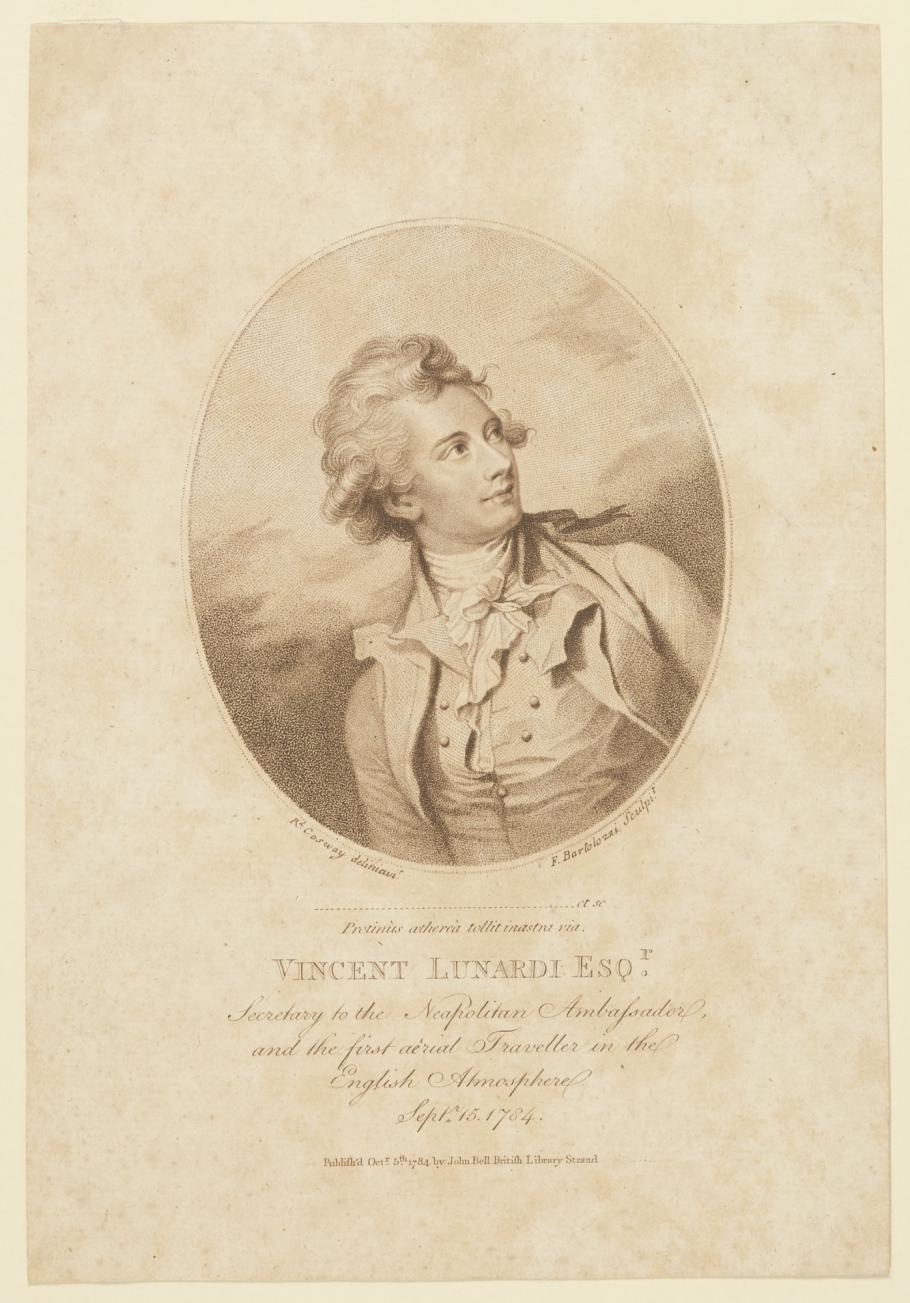
Four Fantastic Aeronauts
Jan 27, 2017
By Tom Crouch
Intrepid men and women who earned their livelihoods in the sky—the aeronauts—emerged as well-known public figures during the 19th century. They were a new breed of aerial showmen, capturing headlines with spectacular ascents and long distance voyages. The Italian Vincenzo Lunardi, Englishmen James Sadler and Charles Green, and the American Thaddeus S. C. Lowe were among the best-known members of this new profession.

Vincenzo Lunardi
Vincenzo Lunardi (1754-1806), secretary to the Neapolitan Ambassador to the Court of St. James, made the first flight in a gas balloon from English soil on September 15, 1784 at the Artillery Ground, London. He took a cat, dog, and carrier pigeon on his flight.
Less than a year later, Lunardi invited the actress Letitia Anne Sage and Colonel George Biggin to fly with him on June 29, 1785. When the party proved to be too heavy, Lunardi, the only trained balloonist in the group, stepped out of the basket and allowed his two guests to ascend. Fortunately, they landed safely two hours later. Sage became the first English female aerial traveler.
James Sadler
James Sadler (1753-1828), a pastry chef, was the second person and the first Englishman to fly from English soil, ascending from Oxford with a hot air balloon on October 4, 1784, just three weeks after Lunardi’s first flight. After several more ascents, he retired from ballooning, focusing his attention on steam engines.
Sadler, however, was unable to keep away. On July 7, 1810, 25 years after his last ascent, Sadler relaunched his aeronautical career flying a gas balloon from Oxford to commemorate the installation of a new Chancellor of the University.
Charles Green
Charles Green (1785-1870) was the most celebrated and accomplished British balloonist of the 19th century. Having made his first ascent in 1821, he would complete over 500 flights during his career. Green was the first aeronaut to inflate his balloon with inexpensive city gas rather that hydrogen. He also introduced the drag, or trailing line.
Green would also become linked to one of the most widely reported aeronautical tragedies of the era. On July 24, 1837, against his better judgement, Green carried Robert Cocking, a water colorist and would-be inventor, aloft. Cocking wanted to test his parachute design and was dangled beneath the balloon. Large crowds of paying spectators arrived to witness the Cocking parachute demonstration. Sadly, Cocking’s parachute failed.
Thaddeus Sobieski Constantine Lowe
Thaddeus Sobieski Constantine Lowe (1832–1913) was one of the great American aeronauts of the 19th century. With the coming of the Civil War, T. S. C. Lowe realized the utility of ballooning to conduct aerial reconnaissance on enemy troops. He convinced President Abraham Lincoln of the benefits of a Balloon Corps for the Union Army. Lowe created the Corps and led observations on Confederate troops.
Thaddeus Sobieski Constantine Lowe (1832–1913) was one of the great American aeronauts of the 19th century. On June 14, 1860, Lowe and William Paullin made flights in celebration of the visit of the Japanese Embassy to Philadelphia. Lowe stands to the far left in the print. Staff members of the Smithsonian’s Freer and Sackler Galleries date the print to 1867-1868, and indicate that the artist, Utagawa Yoshitori, who had never seen either a balloon or Philadelphia, based the buildings in the print on an Illustrated London News article on Agra, India. The very accurate image of Lowe (far left) in the print may have been based on a portrait published in Harper's Weekly (9/24/1859).
Related Topics
You may also like

We rely on the generous support of donors, sponsors, members, and other benefactors to share the history and impact of aviation and spaceflight, educate the public, and inspire future generations. With your help, we can continue to preserve and safeguard the world’s most comprehensive collection of artifacts representing the great achievements of flight and space exploration.
Support the Museum
We rely on the generous support of donors, sponsors, members, and other benefactors to share the history and impact of aviation and spaceflight, educate the public, and inspire future generations. With your help, we can continue to preserve and safeguard the world’s most comprehensive collection of artifacts representing the great achievements of flight and space exploration.






